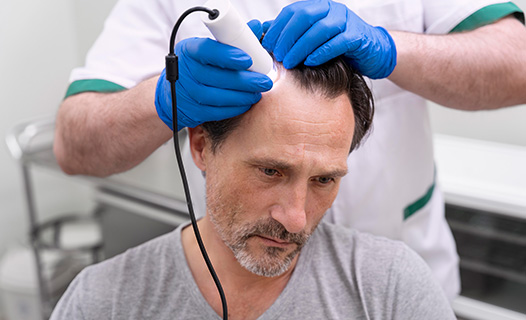

How does it work?

FUE is a hair transplant technique in which a small round punch is used to extract units of hair follicles from an area of dense hair growth to an area of baldness. Each of these units contains one to four hairs.
Though the abbreviation ‘FUE’ is commonly known to stand for Follicular Unit Extraction, the International Society of Hair Restoration Surgery (ISHRS) recently determined that the procedure would be renamed ‘Follicular Unit Excision’.
With strip surgery – the old fashioned way of transplanting hair, also known as Follicular Unit Transplantation or FUT- a strip of donor tissue is removed from the back of the head (where hair loss is not present) and trimmed under magnification into individual follicular unit grafts.
FUT surgery is usually more suitable for larger areas of baldness as up to 3,000 grafts can be transplanted at one time, as long as there is an adequate supply from the patient. However, FUT requires longer healing time post-surgery and a large scar will remain across the scalp which can be hidden by longer hair.
The specialized tool used in FUE allows the surgeon to remove hair from the skin without causing damage (no strip is cut). FUE hair transplantation is minimally-evasive and therefore the scalp heals faster. A patient will often show no visible signs ten days after surgery.
Following are the steps for the FUE hair restoration procedure:
With age, the 3 phase cycle of hair growth and regrowth will shorten till the hair follicles are no longer able to regrow hairs. However, not all people start losing hair at the same time. Some people start balding in their 30s, and some, much later or earlier.
FUE hair transplants can help hair regrowth by putting new hair follicles with the capacity to grow hair in place of the old follicles. After the transplant, the new hair follicles will be nourished by blood vessels and begin growing hair in the area which previously was previously balding or had thin hair.
Follicular Unit Extraction (FUE) is a technique where individual hair follicles are extracted from a donor area and transplanted to thinning or balding areas.
FUE is suitable for most individuals; however, a consultation is required to assess candidacy based on hair type and loss pattern.
Benefits include minimal scarring, quicker recovery time, and natural-looking results.